Silk — Smooth as you like
Games demonstrated at Essen always tend to create quite a buzz, and those with unusual mechanics and attractive artwork can really stand out among the sea of eurogames. Silk, from designer Luis Ranedo and artist Roc Espinet, was first shown at Essen 2018 and since then the hype surrounding it has been steadily growing.
Silk is a hybrid of worker placement, dice rolling and area control with some fairly harsh take that elements thrown into the mix to really spice things up. It’s billed as entry level because of its simple mechanics, but planning each turn takes care if you want to maximise your silk production and avoid having your precious worms abducted by the deadly Ookami.
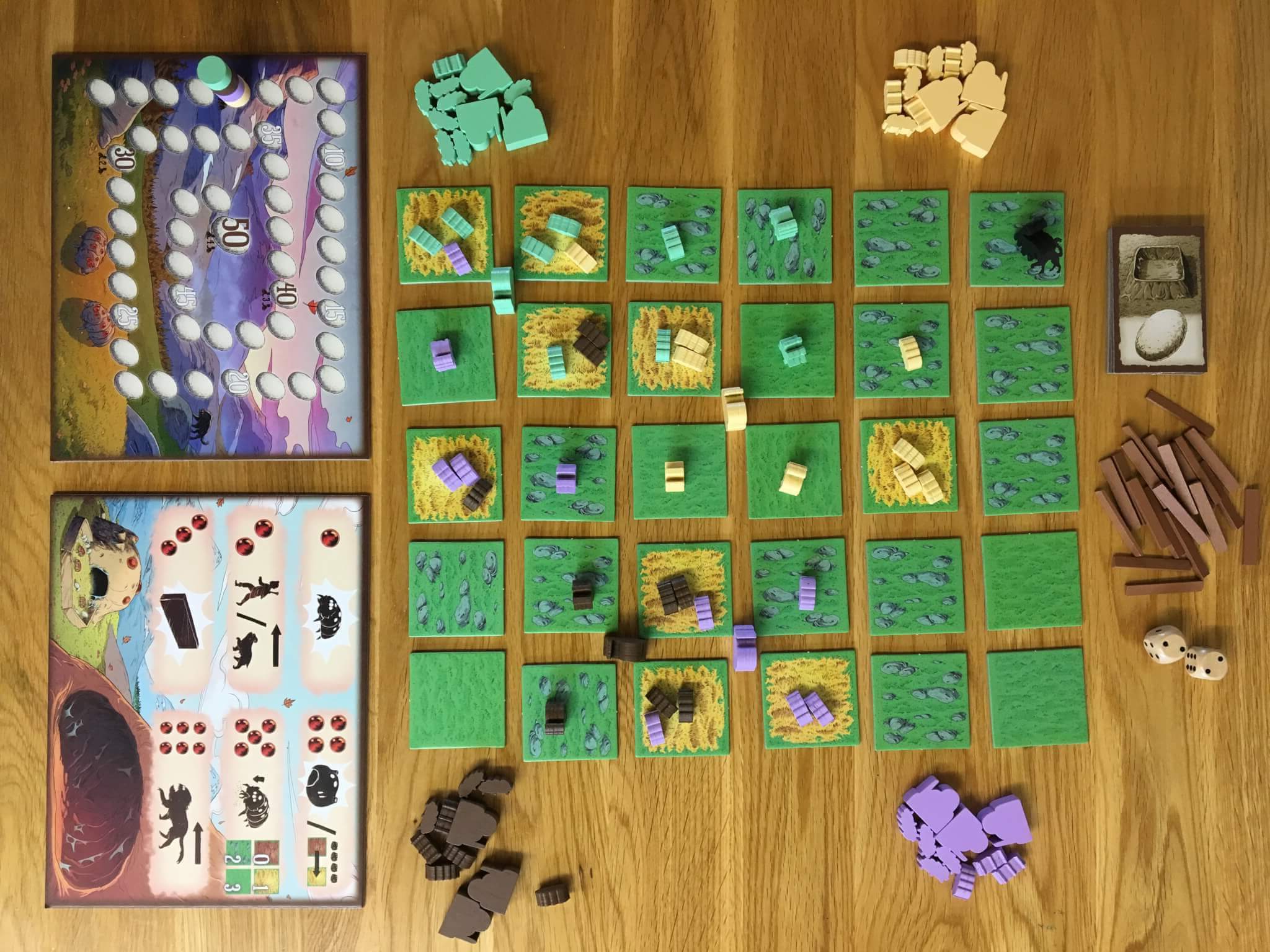
Arriving in a medium sized box, Silk comes with a modular board featuring up to thirty tiles when played with the full complement of four players. Each player receives fifteen silkworms, a mastiff and a shepherd, plus four silkworm nurseries. The objective of the game is to earn silk by placing your silkworms in the most luscious regions when harvest comes, whilst simultaneously pushing the silkworms of other players into less verdant pastures — or even better — into the path of the Ookami.
On their turn, a player will basically take three action;, the first of which is mandatory and involves placing a silkworm from the reserve onto the board. There are placement restrictions to abide by, but assuming that you can adhere to them, you will place a new silkworm every turn, or if necessary, rescue one from the Ookami’s lair. You will then roll the two dice to determine your second and third actions.
Each action has a corresponding value, for example shepherd or mastiff movement happens when a two is rolled, whilst on a three, the player may build a fence. On a five they may harvest with their silkworms or on a six, they can move the Ookami in a way that suits their particular agenda. Luck obviously plays a part, but players may spend their silk points to modify the dice roll, so if there’s something you simply must do there’s always a way.
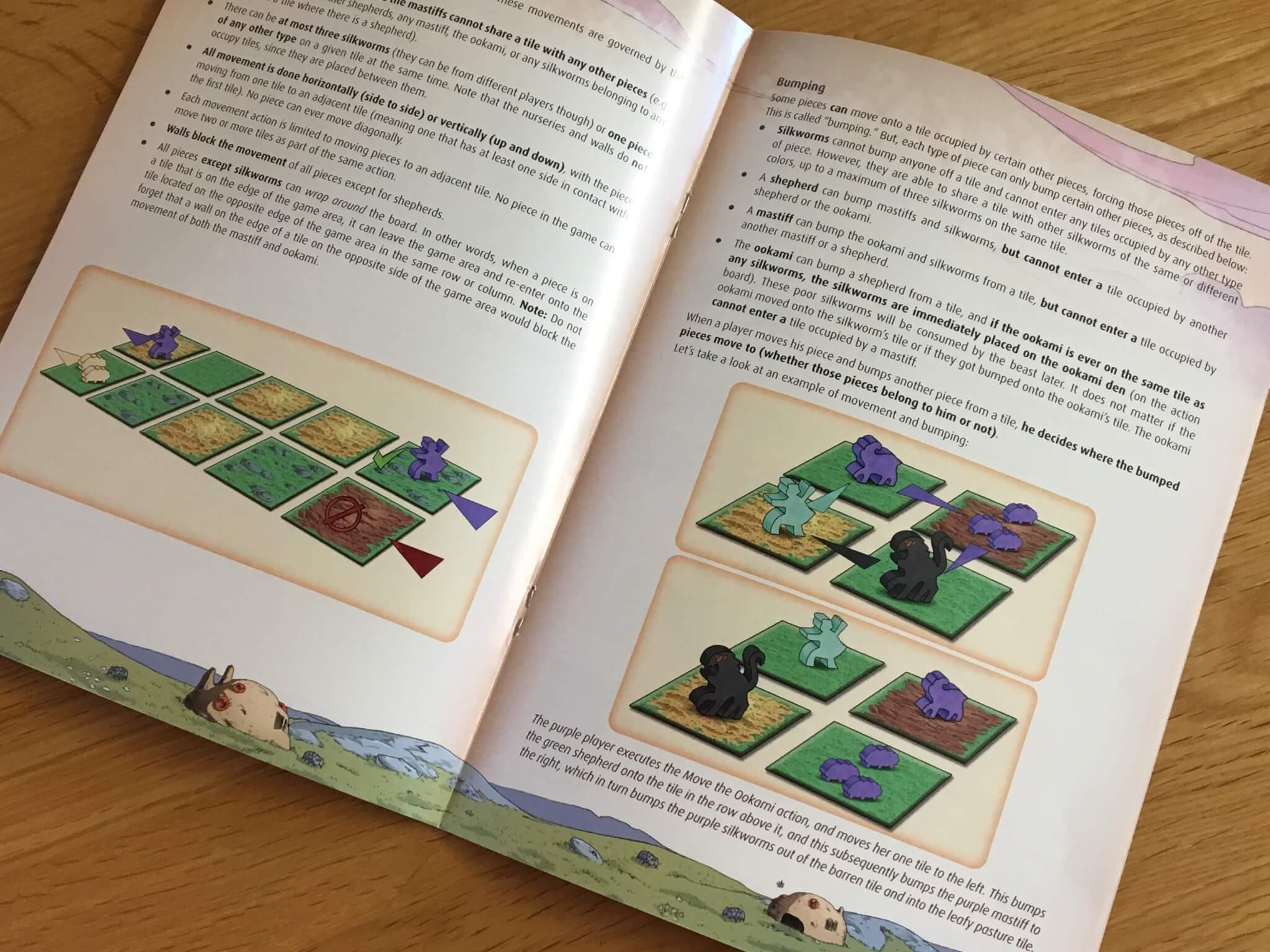
What makes Silk so interesting to play are some of the movement rules and how the different pieces interact with each other. For example, each space can hold up to three silkworms from any number of players, but no other piece may occupy the same space as a silkworm. When a shepherd or mastiff move onto the same space as one or more silkworms, those silkworms will be “bumped” into other spaces or off the board (at which point they return to their owners off board supply.)
Mastiff pieces can be pushed by shepherds and cannot enter spaces with shepherds in, but they are also the only piece that’s able to chase away the Ookami (in addition to being able to push silkworms.) The Ookami, in turn, must avoid mastiffs, but can push shepherds away and if she ever enters the same space as one or more silkworms, then she will capture it and send it to her lair. At the end of the game, any players who have silkworms in the Ookami’s den will lose silk points (because they’ve been eaten.)
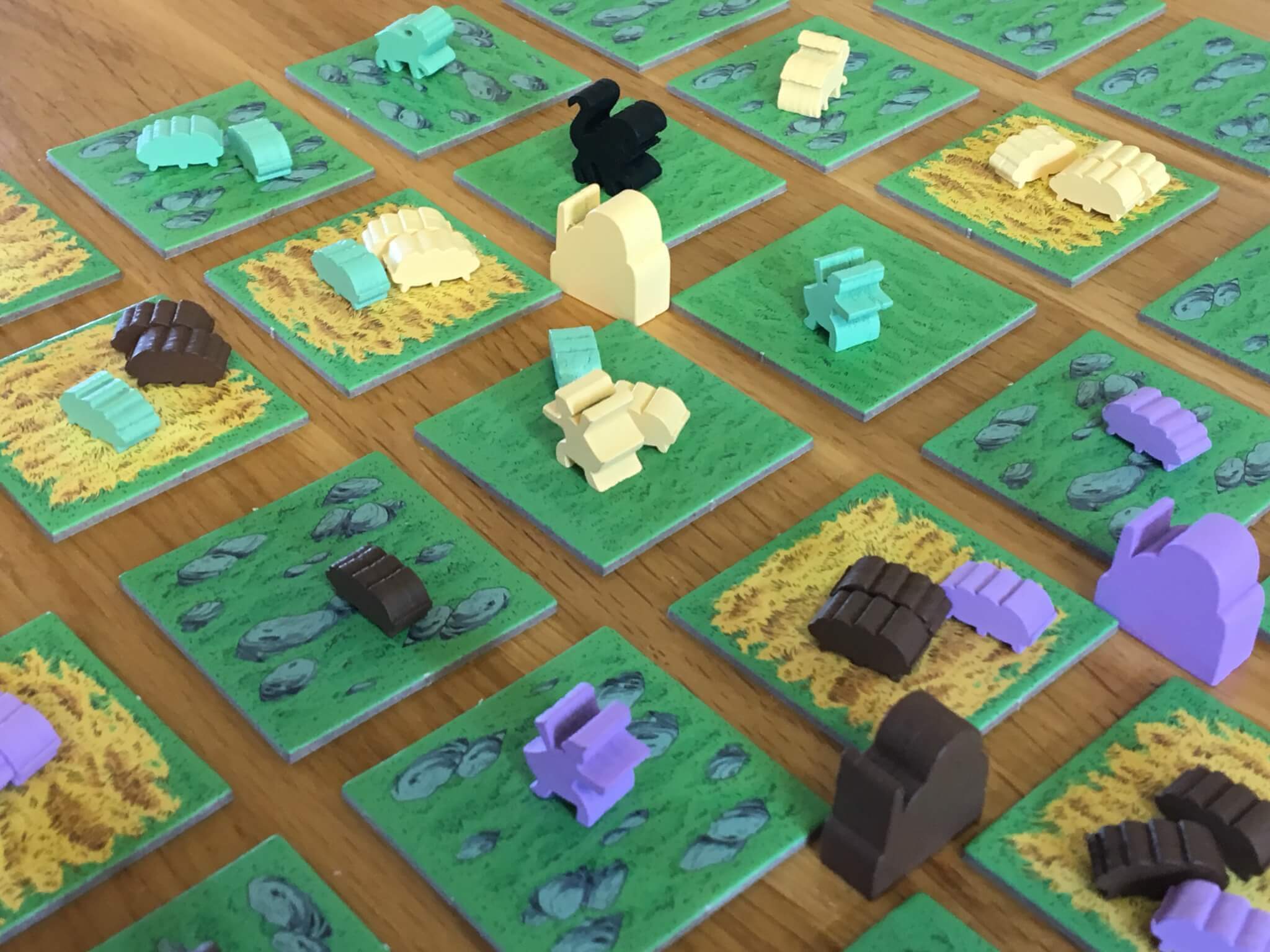
Another unusual feature in Silk is the fact that movement for all pieces other than silkworms can wrap around the board. This means that when a shepherd, mastiff or the Ookami either choose to move or are bumped off the edge, then they will reappear on the opposite side of the board, on the same row or column. This leads to some spatial awareness puzzles as the game unfolds and features like fences (which only shepherds can cross) come into play.
Structurally, Silk is very appealing even at a basic level. The players will jostle to get their silkworms into the richest regions and will compete to try and protect them from the Ookami by placing fences and using their mastiff piece carefully. At some point though, repeated harvests will flip the board tiles to their barren side and force the players to venture outwards into danger. Smart use of the Ookami is essential, but thanks to the dice based action selection system, it’s not something that a player could rely on as their sole strategy.
The fact that there is some chance involved in what you’ll be able to do each turn (and that players can influence it by spending silk) is perhaps one of the most interesting features of Silk. Had this been a straight action selection or worker placement system, I think the game would have lost some of its appeal.
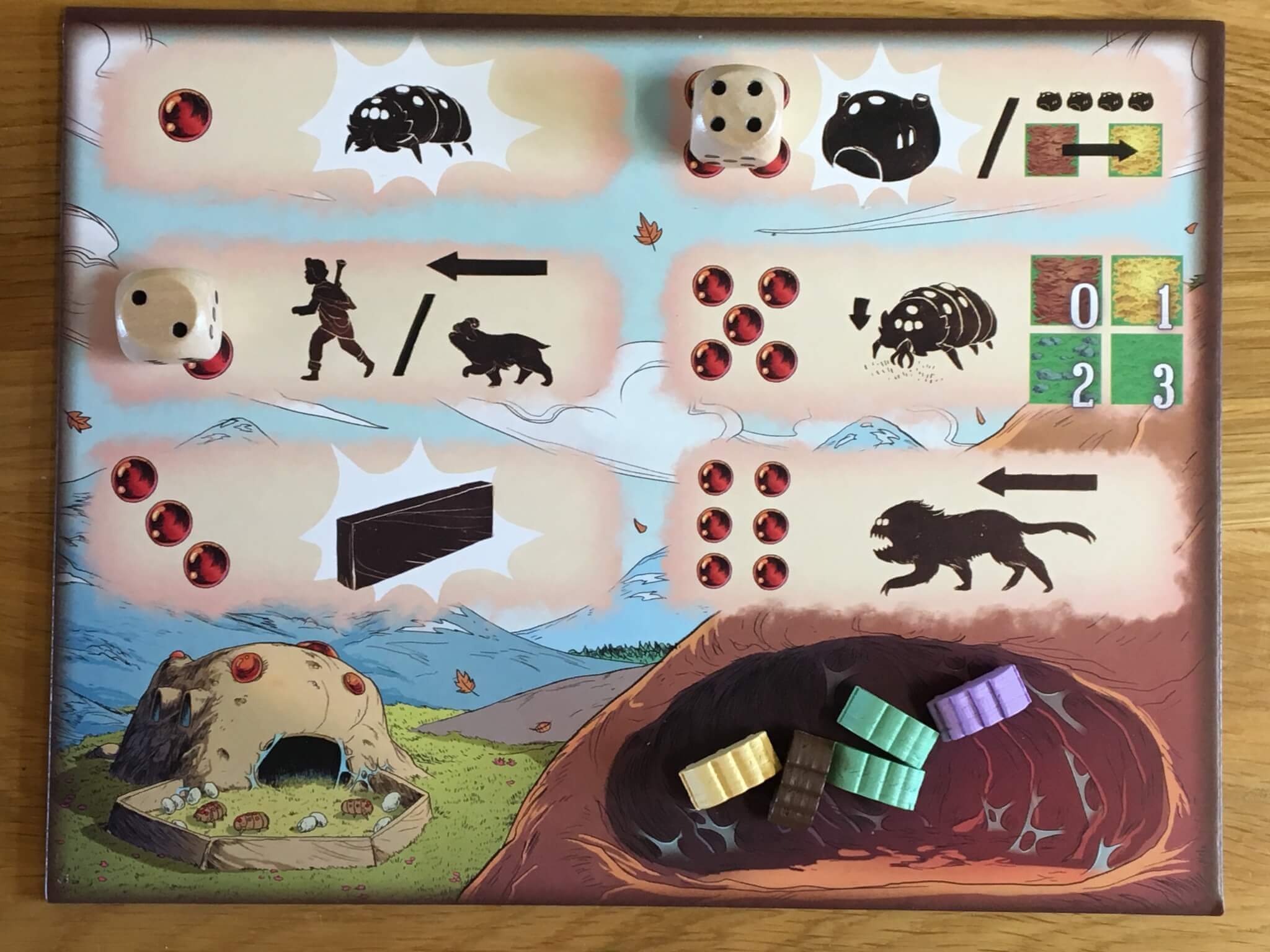
As it stands, you’ll roll the dice hoping for a particular outcome and sometimes get it, whilst on other occasions you’ll be left with the decision about whether to spend a small number of silk points to achieve it or not. In some cases you’ll roll wildly wide of what you wanted and in that case, won’t be able to spend the silk — when this happens, it can be frustrating, but there is never nothing to do with what you’ve rolled.
There are bonus tiles to be claimed for being the first to do various things (like place all your silkworms or create an enclosure) and these give the game additional focus. Most games end when one player reaches the set number of points (based on player count) but the game may also end when all tiles are barren (they can be restored, but it is laborious) or when all fences have been placed.
Whilst I mentioned earlier that Silk comes in a smallish box and has some superb artwork, I should also mention that the component quality here is absolutely fantastic and there is a lot in the box given its size. I haven’t encountered Devir Games before, but the quality of the wooden shepherds, the mastiffs and the Ookami is excellent and the pieces are very finely cut. The silkworms, fences and nurseries are also made from wood and of excellent quality, and the board pieces are thick cut card. The manual is filled with evocative artwork and in general, is very well written and informative.
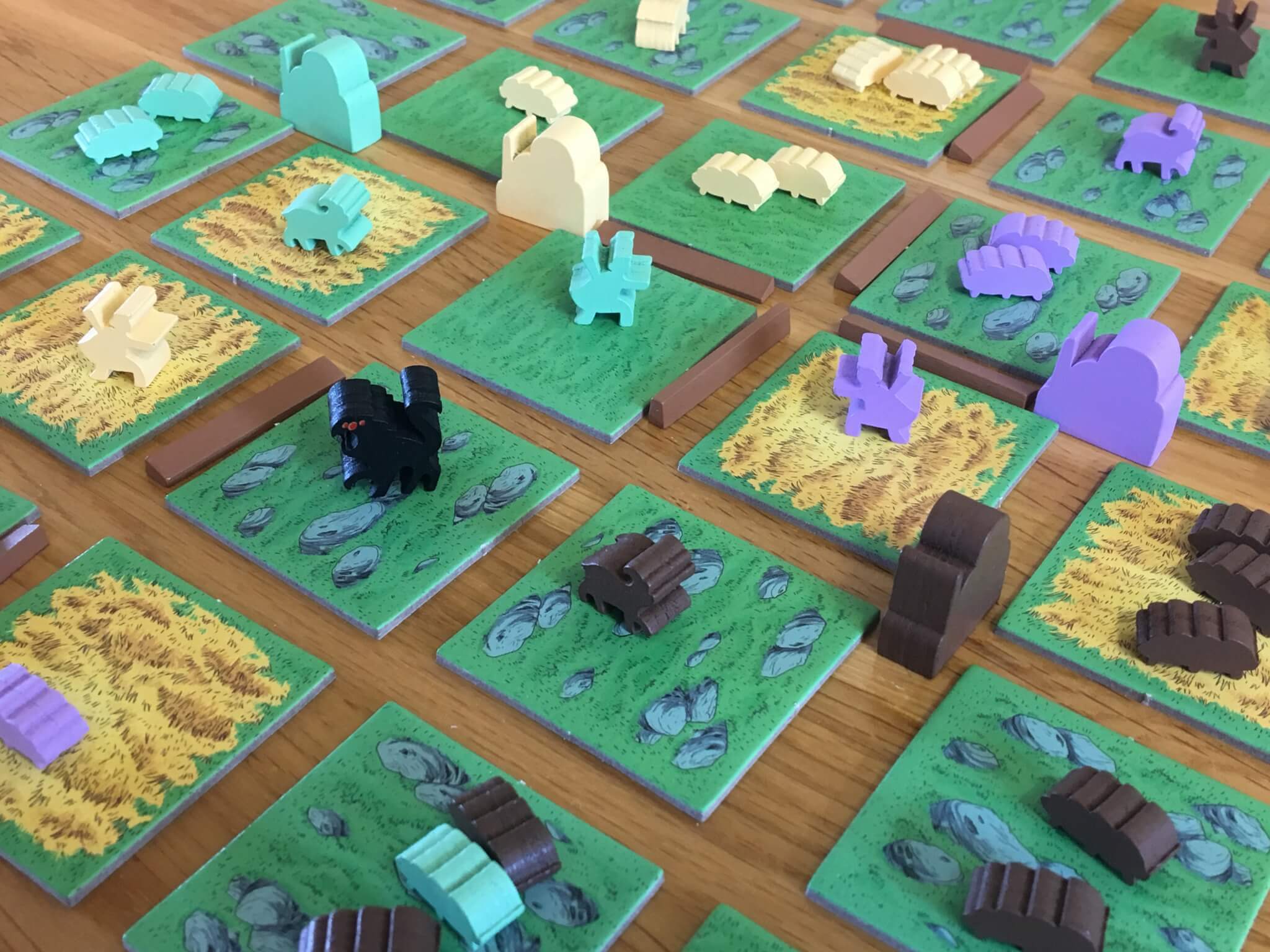
On the downside, I did find that Silk had a few fiddly rules, mostly related to placement of silkworms and/or movement of them. There are situations where the game requires the placement of a silkworm but the restrictions on where it can be placed would prevent the player from doing so. In this case, the rules are not specific about what happens, so we had to create a house rule for that situation.
Silk is a thematically unique and generally very enjoyable game that has a small footprint and an impressive look when setup. It crams some really unusual and enjoyable mechanics into a concept that is simple enough for anyone to pick up and it is always immersive enough to make the thirty to forty five minute playtime feel as though it simply breezes by. On that note, it feels as though it is over a little briefly for my taste, but that’s only because I enjoy the mechanics enough that I want to explore them for longer.
Silk is a fantastic addition to any collection, without a doubt, and on this occasion, it’s a game that more than lives up to the Essen hype. I’ll be keeping a close watch for further games from both Devir Games and this designer in the future and I’ll certainly be willing to play Silk any time that I am asked to. The fact that it takes up hardly any shelf space is the icing on the cake!
You can purchase Silk on Amazon.
Love board games? Check out our list of the top board games we’ve reviewed.

Comments are closed.